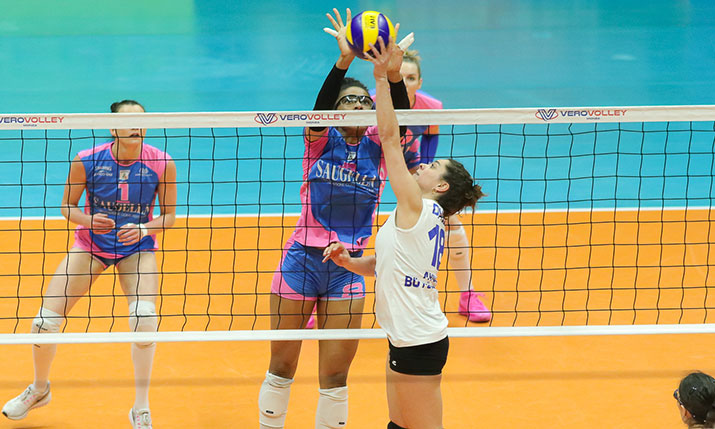Thought Leadership: Women’s sport enthusiasts are an untapped audience for UK broadcasters says Imagen
 With the FIFA Women’s World Cup, Netball World Cup and the Women’s Ashes all taking place within a few weeks of each other this summer, women’s sports enthusiasts should have been in their element, writes Charlie Horrell, CEO at Imagen.
With the FIFA Women’s World Cup, Netball World Cup and the Women’s Ashes all taking place within a few weeks of each other this summer, women’s sports enthusiasts should have been in their element, writes Charlie Horrell, CEO at Imagen.
Yet, while the FIFA Women’s World Cup attracted a record-breaking audience of 28.1 million people in the UK, it has highlighted how traditionally under-served women’s sports are by broadcasters and that fans of these sports aren’t always able to keep up with the latest developments and matches.
Although viewers were able to catch all the action from the women’s football and netball events via BBC coverage on television and online, this isn’t a regular occurrence for fans of women’s sports.
Currently, 59% of the UK population are actively interested in women’s sports [Nielsen Sports] with 42% of these people saying they would watch more if it was accessible on free TV, while over a third (37%) would watch more if it was accessible free online. The demand for women’s sport coverage is plain to see, so how can broadcasters appeal to this lucrative market without compromising their existing outputs?
Developing a viewing platform
As the popularity of women’s sports soars, broadcasters will need to find innovative new ways to share live and existing footage with fans. An effective way to do this would be to create a separate platform where fans can go to watch all of the action, which is something the NFL has done through its Game Pass, which allows fans to pay for a subscription and stream games online through a cloud-based service.
For the majority of broadcasters, or even sports federations, following the NFL’s lead and developing a content platform is an effective way to store and share their content with this new demographic. As cloud-based solutions are scalable, the broadcaster can grow (or even scale back) the platform in line with the popularity of women’s sports and as awareness of the platform grows.
With two-thirds of consumers saying not enough is being done to promote women’s football [MediaCom and talkSPORT, June 2019] and almost half thinking it’s the responsibility of broadcasters to promote the sport, creating a content platform can also help broadcasters overcome this obstacle.
By storing all footage in one place, broadcasters’ internal teams can use this to create marketing and ad campaigns to increase awareness of events. This could help them gain a bigger share of the women’s sports audience at a time and to reach completely different audiences who are yet to engage with women’s sports.
 Online coverage booming
Online coverage booming
It’s not just women’s football that has increased in popularity as the women’s 2017 Cricket World Cup saw a 300% global increase in total viewing hours [Deloitte]. However, it seems broadcasters aren’t meeting the demand for coverage of sports like cricket as 71% of UK adults think that showing more women’s sport would be good [Netfluential, March 2019] and the main barrier to watching more women’s sport is the lack of coverage.
These findings highlight a vital need for broadcasters to answer the demand for a wider range of women’s sports to be televised and more regularly. This could be easier to achieve than it may seem, as the way society consumes media has changed dramatically in the last decade as reflected by the 30% of sports fans who have live streamed sporting events on their smartphones or tablets [Google Sports Viewing Survey, December 2017]. Consequently, broadcasters no longer need to stick to the traditional method of televising sports on regular channels.
Rather, streaming women’s sporting events online would allow broadcasters to appeal to these fans while continuing to serve mainstream audiences on their original channels. This is something that the BBC did with this year’s Netball World Cup which it broadcast live through BBC iPlayer rather than on its main channels.
Broadcasters that choose this approach could learn from US-based streaming service FloSports, which has shunned mainstream sports in favour of the niche, streaming up to 10,000 live sporting events annually. In 2018, the company signed more than 150 new rights deals, allowing it to broadcast everything from bowling to softball and Jujutsu. This has allowed the platform to appeal to the underserved, who are looking to follow their local team, rather than a national club, for instance, further attracting new viewers.
Appealing to a growing audience
Women’s sports present broadcasters with a real opportunity to attract new audiences and one that is only going to continue to grow as women’s sports teams become more successful. While large international events like world cups have begun to receive more visibility, regular fans of women’s sports at national level remain a largely untapped audience.
However, changes in viewing habits and advances in technology are making it easier for broadcasters to serve these audiences and gain a share of a lucrative market with implementing an online content platform among the most effective approaches.
Ultimately, covering women’s sports will not only benefit women’s sports enthusiasts, but it will also help the sports become more accessible and visible to a wider audience and expose broadcasters to this growing fan base.

